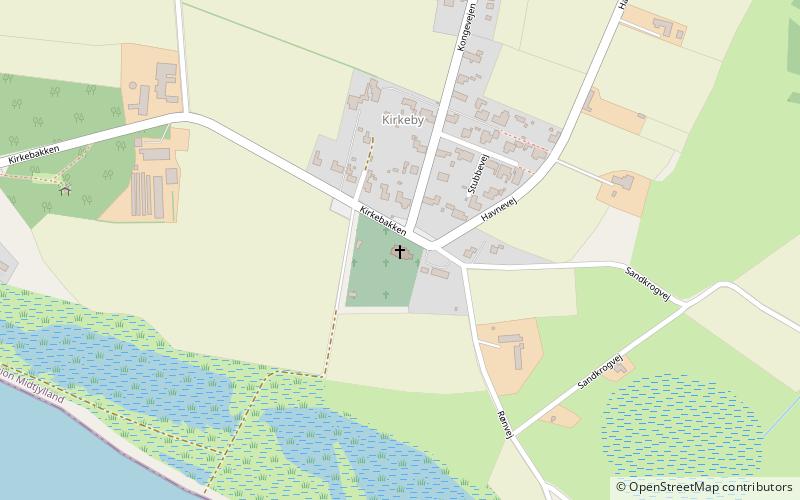Jegindø Kirke, Jegindø


Facts and practical information
Jegindø Church is located on Jegindø. The church was consecrated on 22 June 1919 by Bishop Christian Ludwigs from Aalborg. It replaced an older church built in the late 12th century. The older church was only a little over 10 metres long until 1883, when the nave was extended by just over four metres to the west. On 21 April 1918, however, the old church was used for the last time and on 10 June of the same year the foundation stone was laid for the new church. Of the old church, only the chancel remains as the sacristy of the new church.
Some of the furnishings, however, come from the older church. Thus the pulpit by the organ dates from 1647, the pulpit from 1640 and the altarpiece from 1598. The four pyramidal spires at the top of the altarpiece, however, date from the early 18th century, and the painting in the centre of the crucifixion dates from 1880. The texts on the altarpiece date from 1750, and the paintings on the wings date from the time of Pietism.
The granite baptismal font originally had a wooden base, which was replaced by a granite plinth in 1919. The baptismal font is from Nuremberg and dates from around 1575. It was given to the church in 1667 by "Mr Povl", who was a parish priest and headmaster at the Latin school in Lemvig.
The vaults of the church are decorated with frescoes painted by a painter named Steller and master painter J.L. Jensen from Uglev. The votive ship is a model of the frigate Dannebrog and was given to the church in Christmas 1894 by teacher A.N. Penderup in Tilsted.
The two church bells date from 1463 and 1947 respectively. The oldest bell was originally hung in a bell house, from 1873 in a bell tower and finally in a bell chamber on the west gable of the old church from 1883. The new church of 1919 was fitted with a tower, where the two bells hang today.
Jegindø Kirke – popular in the area (distance from the attraction)
Nearby attractions include: Oddesundbroen.

